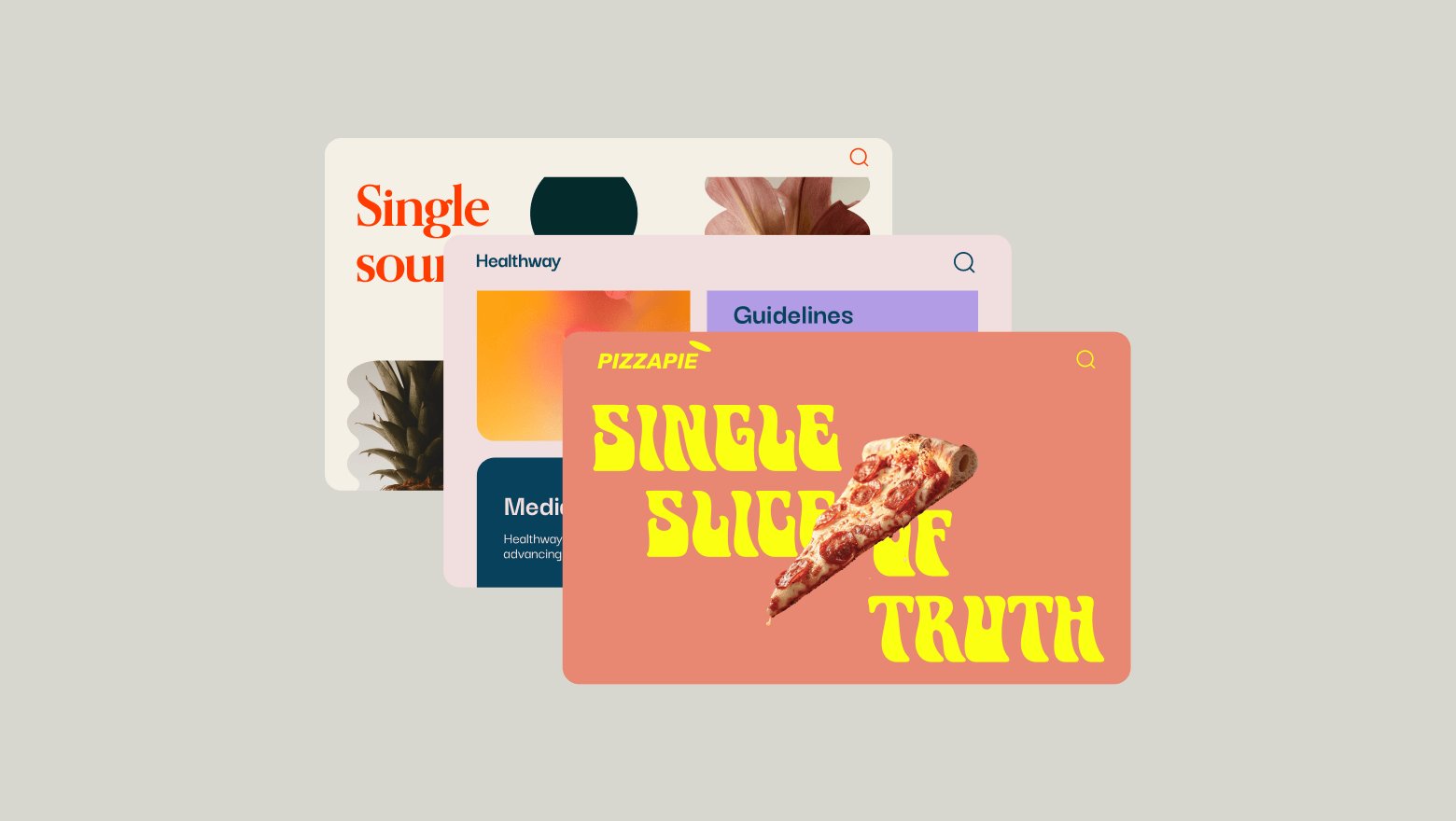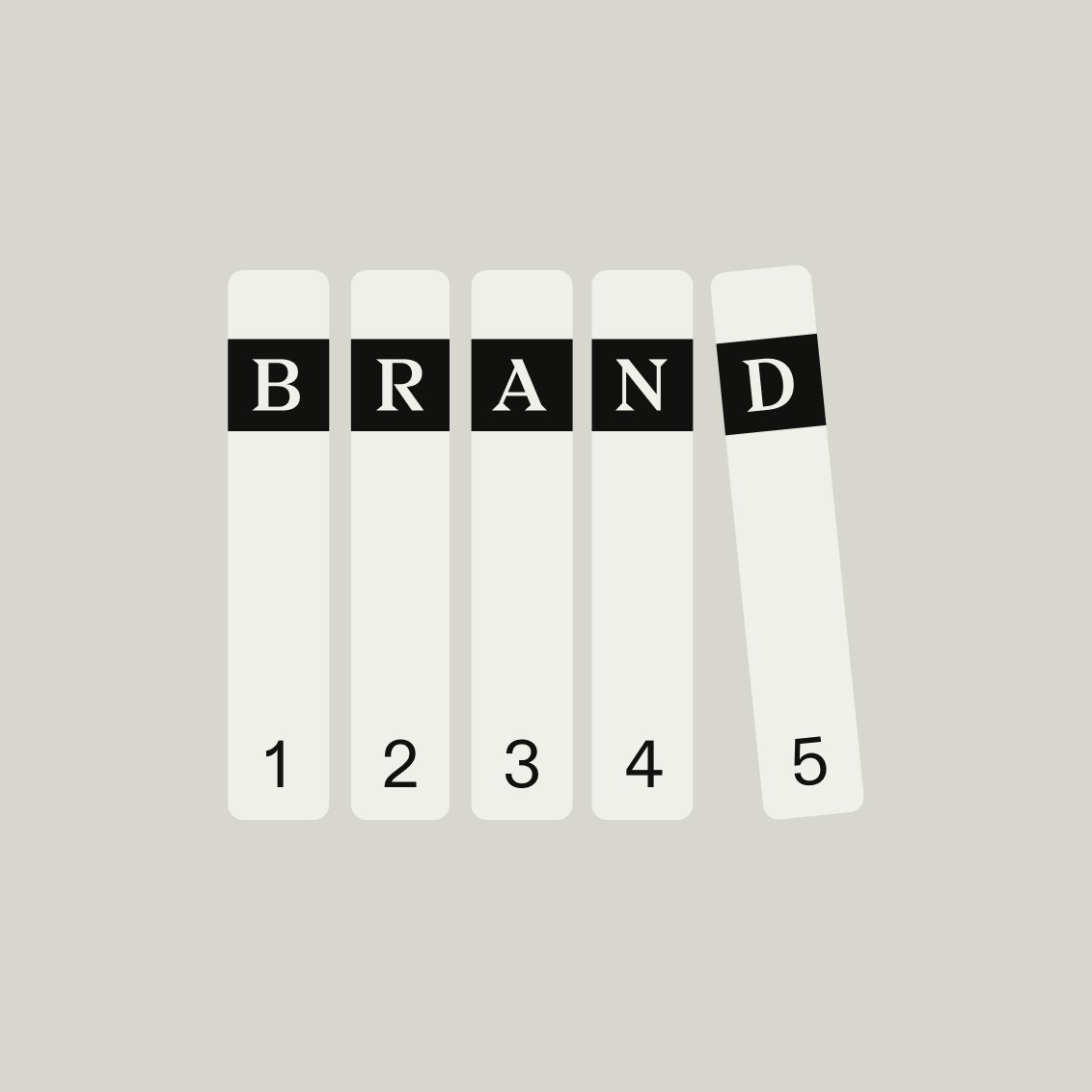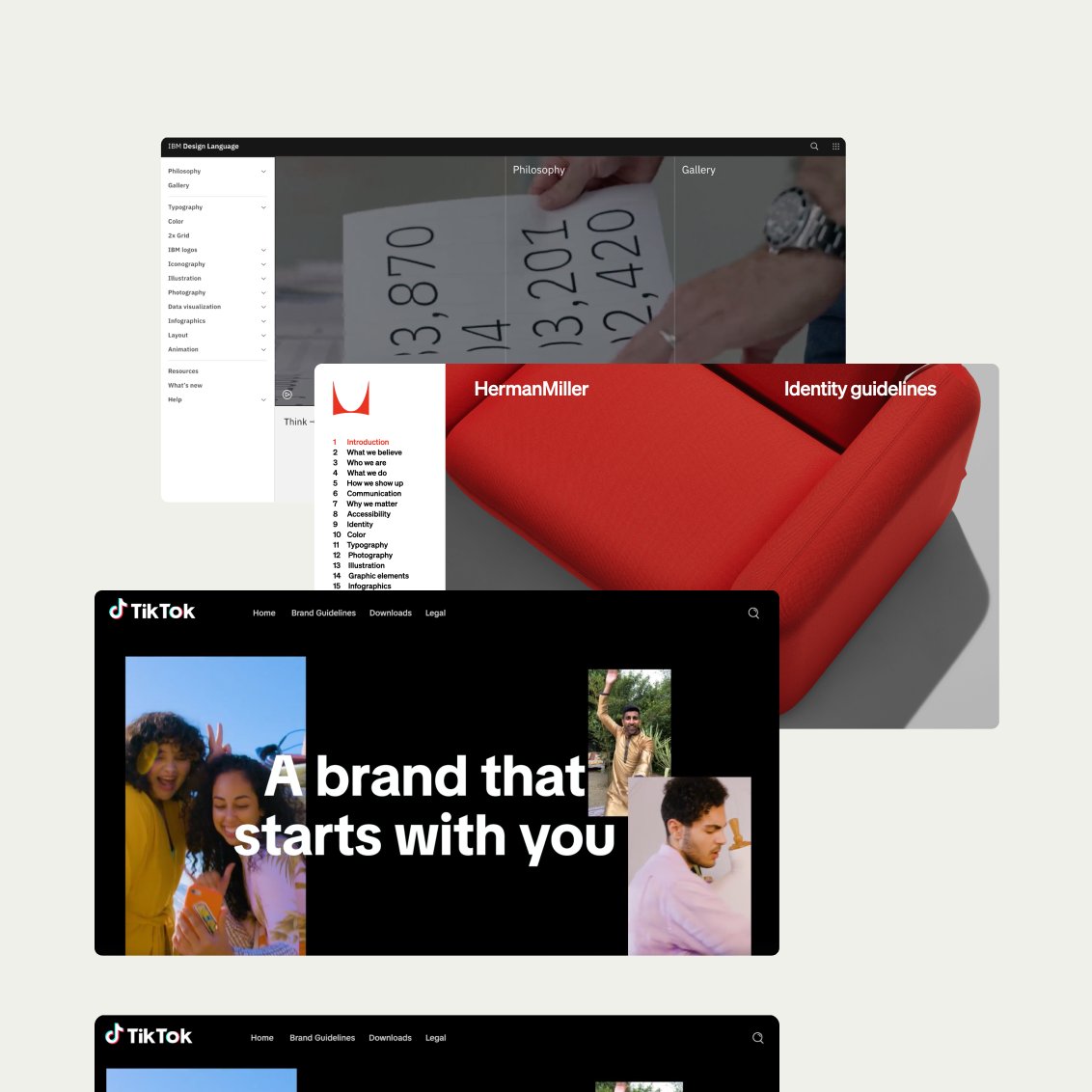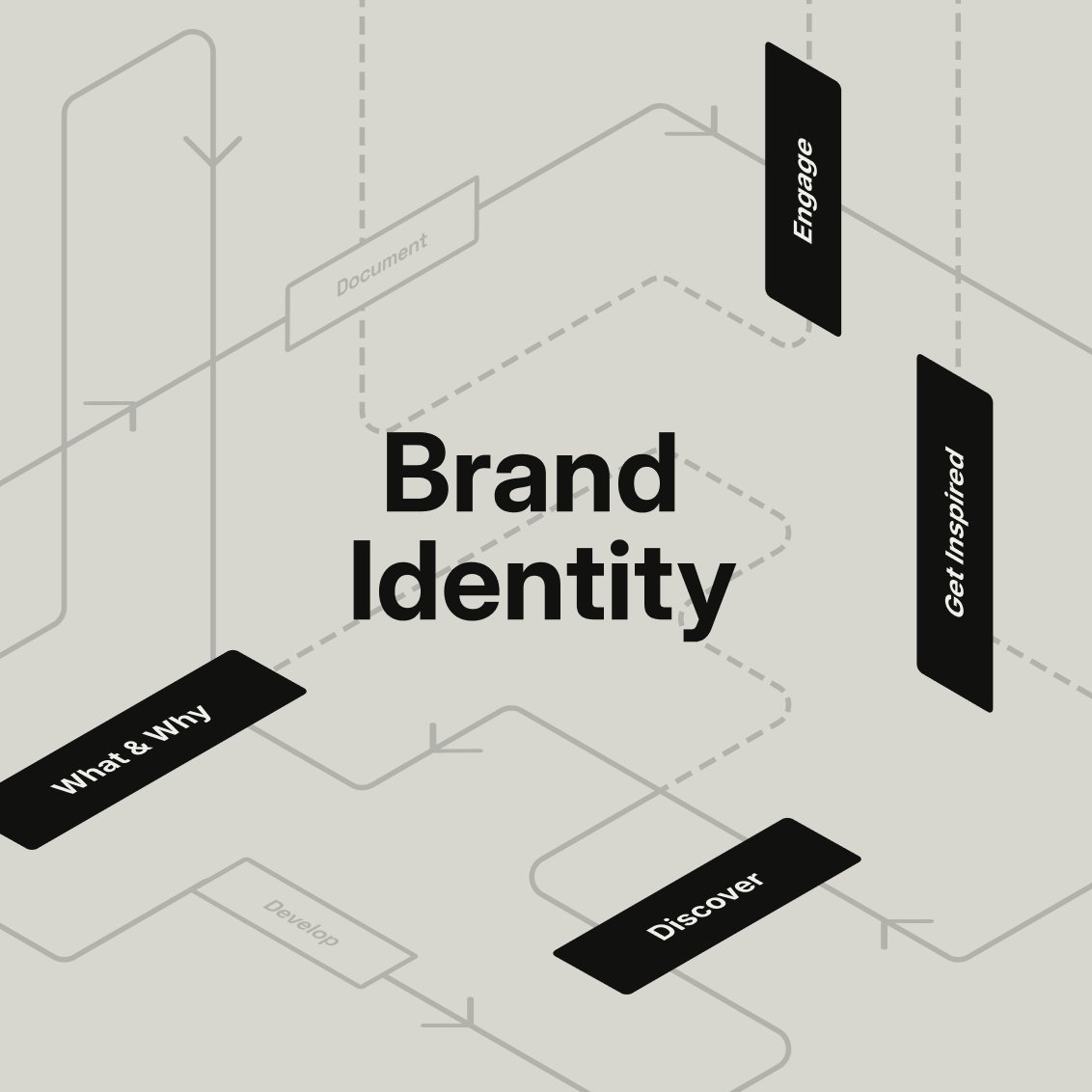Think of the most iconic brands you know — Apple, Nike, Coca-Cola. What sets them apart? A unique brand design that audiences recognize across touchpoints.
Brand design shapes how people perceive your business and helps you stand out in a crowded market. In fact, consistent brand design and presentation can help you increase revenue by up to 23%, according to Marq. And as markets evolve, your brand design needs to adapt without losing clarity or cohesion.
In this guide, we’ll cover the fundamentals of brand design, its role in business growth, and how tools like Frontify simplify everything from asset management to scaling across global teams. Whether you're refreshing your existing, successful brand or building one from scratch, this article will give you the steps to guide your brand design process.

What is brand design?
Brand design is the process of creating a cohesive visual identity for your brand. It encompasses elements like logos, colors, typography, and imagery. A strong brand design strategy is reflective of your values, positioning, and personality, and helps you stay consistent across all touchpoints — from social media and websites to billboards and packaging.
Brand design and brand management differ in that brand design focuses on the creative and visual aspects of branding, while brand management focuses on the operational execution.
Why brand design is essential for business growth
Brand design is an essential part of brand management that helps build trust, foster customer loyalty, and differentiate your brand in competitive markets.
Builds emotional connections with customers
When your brand design aligns with your company’s personality or mission, it feels more genuine, which builds trust among your potential customers and existing ones alike. For example, Patagonia’s nature-first aesthetic reflects its environmental mission, and its target audience trusts that consistency.
Helps you stand out in crowded markets
Unique and well-executed images and visuals are more memorable than text alone, helping you stand out against your competitors. According to the Nielsen Norman Group, people remember images better than words because visuals are encoded in memory both as images and as descriptive labels, which makes distinctive visuals especially powerful for rapid brand recall.
Allows you to scale seamlessly across markets
A strong brand design framework provides clear, codified guidelines so the brand stays consistent when adapted for new markets or platforms. For example, a skincare brand entering new regions can translate copy and feature models that reflect local audiences, while keeping layouts, colors, and logo use consistent to maintain brand recognition.
Aligns internal teams for efficiency
A clear brand design gives teams a shared playbook and eliminates guesswork, ensuring everyone is using the same visuals and messaging. For example, without clear design guidelines, marketing might design a campaign with one logo style while the product team uses another, creating inconsistencies.
The key elements of effective brand design
Effective brand design starts with a clear identity and is sustained by the right tools, including comprehensive guidelines, scalable templates, and centralized asset management. These elements all work together to ensure consistency, efficiency, and a unified brand experience across every touchpoint.
- A clear vision and identity: A strong brand starts with a well-defined purpose and point of view. Your vision and identity set the tone for every expression of your brand, including your brand design.
- Comprehensive brand guidelines: Brand guidelines serve as a centralized reference for brand management. With regard to brand design, guidelines ensure all visual brand elements are used consistently and correctly across every application.
- Scalable templates for efficiency: Templates help teams create on-brand materials quickly and confidently. They reduce manual design work while keeping all your assets visually consistent.
- Centralized asset management: When brand assets are scattered across folders, drives, or email threads, consistency and efficiency break down. A centralized system enables everyone to work from the same, most up-to-date visual assets, reinforcing design integrity across every channel.
How to create your brand design strategy: a step-by-step guide
Building a strong brand design strategy requires a structured, repeatable process.

1. Audit your current brand assets
Start by evaluating the brand assets you already have (e.g., logos, color palettes, typography, templates, imagery, and tone of voice). A clear audit helps you spot inconsistencies, outdated materials, and missing elements that may weaken your brand’s impact.
Here’s how to get started:
- Create a centralized inventory of all the versions of all your current brand assets. By doing so, you can find out if any of your teams are using outdated assets. For example, a hospitality group might find different logo designs used across regional properties. Once you’ve centralized everything, archive or delete any outdated versions and only use assets with the most recent logos and designs.
- Compare assets against your current brand guidelines to check for consistency in all your visuals (as well as tone and messaging). A software company might discover that UX copy or sales presentation templates don’t reflect its updated design system. Flag any inconsistencies for revision or replacement.
- Review usage across all platforms and channels like print, web, social, and even internal docs. This helps you spot channel-specific issues, like outdated templates and versions or misapplied assets. For instance, a healthcare brand may find that patient intake forms still use an old logo, while its website reflects the updated branding. After you’ve evaluated, you can plan updates to align every touchpoint.
Talk to key stakeholders, including graphic designers, marketers, and content creators, to understand which assets cause confusion, duplicate efforts, or rework. Their insights can help you prioritize what to fix or clarify in your guidelines.

2. Define your brand’s core identity
To define (or refine) your brand identity, start by clearly articulating your mission (why you exist), core values (what you stand for), and personality (your characteristics). These foundational elements generally reflect the values of your target audience and shape the customer experience.
Gather input from key stakeholders and revisit customer research to find themes that feel both authentic and distinct. Then document tone of voice guidelines and design elements like color schemes, typography, and logo use to ensure consistency across touchpoints.
For example, a health and wellness app brand might define its mission as “helping people build daily mental health habits,” using a calm, friendly tone and clean, minimal visuals — similar to Spring Health or Headspace. This identity would guide everything from its onboarding screens to social posts.

3. Centralize your resources
Centralizing your brand resources in a single platform simplifies your brand design strategy, from asset management to team collaboration. A digital asset management (DAM) platform lets you organize files by type, tag assets for easy search, control access by team or region, and distribute visuals directly within your brand guidelines.
This is especially critical for large or global teams that struggle with version control or asset access.
For example, Datacom, a leading tech company with 6,500+ employees, used Frontify to centralize over 45,000 brand assets and guidelines. They were able to save 3-5 hours per design/branding request and replaced email requests and scattered files with a unified hub. They also improved brand consistency by 50%.
When everyone can access approved assets instantly, your brand stays consistent, efficient, and ready to scale.

4. Create dynamic templates, guidelines, and workflows
Consistency becomes harder to maintain as your brand grows, but scalable tools and processes make it manageable.
Start by identifying your most-used materials (e.g., social posts, slide decks, business cards, one-pagers), and turn them into reusable templates with built-in brand elements like fonts, colors, and logo placement. Use clear instructions so even non-designers can stay on brand.
Document your core brand elements and update them in a centralized platform like Frontify. Digital-first tools make it easy to adjust and share evolving guidelines in real time.
To support scaling, consider:
- Regional or sub-brand guidelines to address market nuances
- Automated approvals and workflows to cut down on manual reviews
- Onboarding resources that empower new team members to use assets correctly from day one
5. Monitor and evolve your brand design
Brand design isn’t static — your strategy should evolve alongside your business, audience, and market trends. Use tools like Frontify’s analytics to track asset usage, identify gaps, and optimize based on what’s working (and what’s not).
Technology plays a key role in scaling brand operations efficiently. AI-powered tools can automate tasks like asset tagging, content recommendations, and even localized content creation, freeing up your team to focus on creative strategy.
Keep a regular cadence for reviewing your brand guidelines, design systems, and workflows. Are they still aligned with your goals? Are they easy for teams to follow? Ongoing iteration ensures your brand stays relevant, consistent, and ready for what’s next.
Build your brand with Frontify
A cohesive brand design strategy is essential for building recognition, trust, and long-term business growth. But consistency is hard to maintain without the right systems in place. That’s where Frontify comes in.
Frontify brings your brand design to life with centralized asset management, customizable templates, live guidelines, and powerful collaboration tools all in one platform. Frontify makes it easy to stay on brand, everywhere, regardless of whether you're scaling globally or refreshing your identity.
Ready to simplify and scale your brand design? Book a demo to see how Frontify can transform your brand design strategy.

